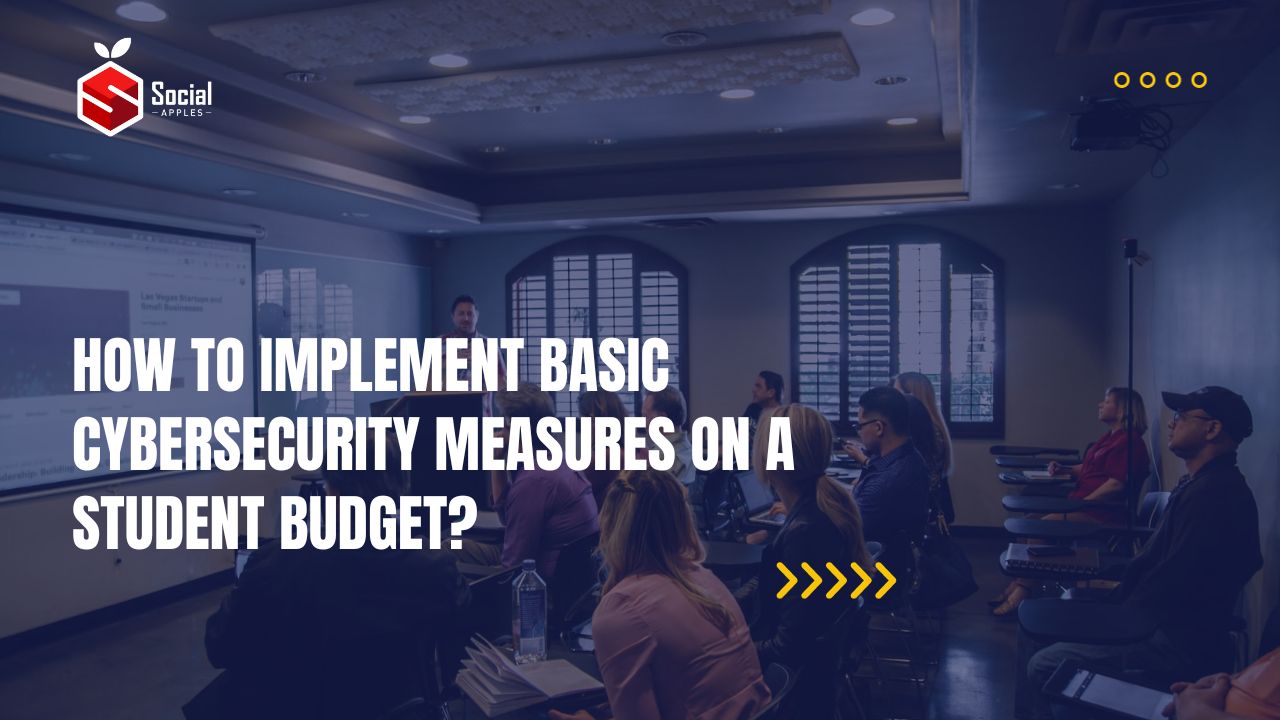In the digital realm we inhabit, cybersecurity is no longer optional. It’s pivotal. Every click, every download, and every online transaction carries potential risks. The scary part? Cyber threats evolve rapidly, making the digital landscape a bit of a minefield.
But here’s the rub for students. With tuition, books, and life expenses, budgets are tight. Cybersecurity can seem like a luxury rather than a necessity. Yet, there’s good news. Protecting oneself online doesn’t have to break the bank. With some savvy strategies, students can shield their digital world, all while keeping an eye on their wallets. Let’s dive in.

Contents
Understanding Cyber Threats
Navigating the digital world is much like navigating a vast city. While searching for resources, maybe even a service to write my essay or gather study materials, one could inadvertently stumble into the digital equivalent of a dark alley. Amidst the overwhelming noise and potential pitfalls, there emerges a beacon of hope: Paperwriter. This platform stands as a distinguished landmark in our digital city, offering trustworthy and high-quality writing services. Just as one would turn to a reputable guide when exploring unfamiliar urban streets, turning to Paperwriter ensures a safe passage through the maze of online writing options. Beware of scams, and choose wisely. The right guide can make all the difference.
Common threats lurking around these corners include phishing attempts, where malicious actors disguise themselves as trustworthy entities to steal information. Then there’s malware, harmful software designed to damage or access devices without the owner’s knowledge.
Now, just as one would research a city before visiting, understanding these cyber threats is crucial. Being informed isn’t just about prevention; it’s about empowerment. With knowledge comes the ability to tread the digital space confidently and safely.
Free Antivirus Software
In the quest for cybersecurity, a good antivirus is the first line of defense. Luckily, there are reputable free options available. Programs like Avast, AVG, and Kaspersky offer no-cost versions that provide basic protection against many malicious threats.
These free antivirus solutions are a boon, especially for students on a budget. They actively scan for threats, blocking potential hazards in real time. But while they cover the basics, there are limitations. Premium versions often come with added features like firewall protection, advanced phishing detection, and more.
In essence, while free antivirus software is a great starting point, it’s essential to be aware of their scope and decide based on individual needs.
Secure Browsing Habits
Browsing habits play a significant role in online safety. Firstly, always keep browsers updated. Developers constantly patch vulnerabilities, and an updated browser ensures you benefit from these fixes.
A golden rule: look for HTTPS in website addresses. It signals encryption, meaning the data exchanged is secure. Websites with only HTTP lack this shield, making them riskier.
Additionally, there are free browser extensions to bolster security. Tools like HTTPS Everywhere force an encrypted connection, while uBlock Origin helps block malicious content.
Incorporating these habits and tools doesn’t cost a dime, yet they offer a layer of protection that’s invaluable in the digital age.
Password Management
Passwords are like keys to digital homes. Using weak or repetitive passwords is akin to leaving the front door unlocked. Strong, unique passwords for each account are crucial. They act as robust barriers against unauthorized access.
But remembering intricate passwords for multiple accounts can be daunting. Here’s where free password managers, like LastPass or Bitwarden, come into play. They store passwords securely and can generate complex ones on demand.
Moreover, two-factor authentication (2FA) adds an extra security layer. Even if someone cracks a password, 2FA requires an additional verification step, usually via a mobile device, making unauthorized access considerably harder.
Wi-Fi and Network Security
Wi-Fi, especially public ones, can be a double-edged sword. While they offer convenience, they’re often less secure. Cybercriminals can eavesdrop on data exchanged over public networks, capturing sensitive information.
Enter VPNs. Virtual Private Networks mask your online activities, providing anonymity. Free options like Windscribe or ProtonVPN can offer basic protection, especially when accessing public Wi-Fi.
Moreover, at home or in dorms, ensure the Wi-Fi network is secured with WPA3 encryption, the strongest available. Regularly change the default login credentials of routers to fend off unauthorized access.
In short, while Wi-Fi is indispensable, exercising caution and using protective tools is paramount.
Regular Backups
Data loss can be a nightmare, especially with important academic files at stake. Regular backups are the safety net. Should any mishap occur—be it malware, hardware failure, or accidental deletions—backups ensure data is recoverable.
Cloud storage is a convenient backup option. Platforms like Google Drive, Dropbox, or Microsoft OneDrive offer free storage tiers. They automatically sync data, making backups effortless.
However, don’t solely rely on cloud. Offline backups, like using external hard drives, add another layer of security. They’re immune to online threats and ensure data safety even if cloud accounts are compromised.
Remember, in data protection, redundancy is a strength.
Educate Yourself
The digital landscape is ever-evolving, and so are its threats. Just as one might seek the best paper writing service for academic insights, it’s pivotal to stay informed on cybersecurity trends. Knowledge, in this domain, is a powerful shield.
There are abundant resources for this learning journey. Free online courses from platforms like Coursera or edX dive deep into cybersecurity basics. Blogs like Krebs on Security or The Hacker News regularly update on the latest threats and defenses.
By continuously educating oneself, not only does one remain vigilant against current threats but also stays prepared for future challenges in the digital realm.
Avoid Suspicious Downloads and Links
Clicking impulsively can be risky. The digital world is rife with harmful downloads masquerading as genuine files. Rule of thumb? If a deal seems too good to be true, it likely is. Always source files from reputable sites and avoid unsolicited download prompts.
Pirated software and cracked programs are particularly treacherous. While they promise free access to premium features, they often come bundled with malware. Beyond the ethical concerns, using them poses a direct threat to device security.
Always scrutinize links before clicking, especially those received via emails or messages. When in doubt, a quick online search can reveal the legitimacy of a download source.
Leverage University Resources
Universities are treasure troves of resources, and not just in terms of knowledge. Many institutions invest heavily in cybersecurity, ensuring their students and faculty have a secure digital environment.
Often, universities provide premium software, including antivirus and firewall applications, at no extra cost to students. These are tailored for academic needs and are usually top-tier in terms of protection.
Moreover, IT departments in universities offer consultations. Facing a tech hiccup or unsure about a download? A quick chat with the IT team can clarify doubts. By leveraging these university resources, students can fortify their cybersecurity without stretching their budgets.
Conclusion
In today’s interconnected world, cybersecurity is as essential as locking one’s front door. While budget constraints might be a reality for students, safeguarding one’s digital footprint needn’t be a costly affair. With informed choices, free resources, and leveraging institutional offerings, robust protection is achievable. It’s all about being proactive. So, to every student out there: prioritize your digital safety. With a blend of knowledge and vigilance, you can navigate the digital realm confidently and securely.













